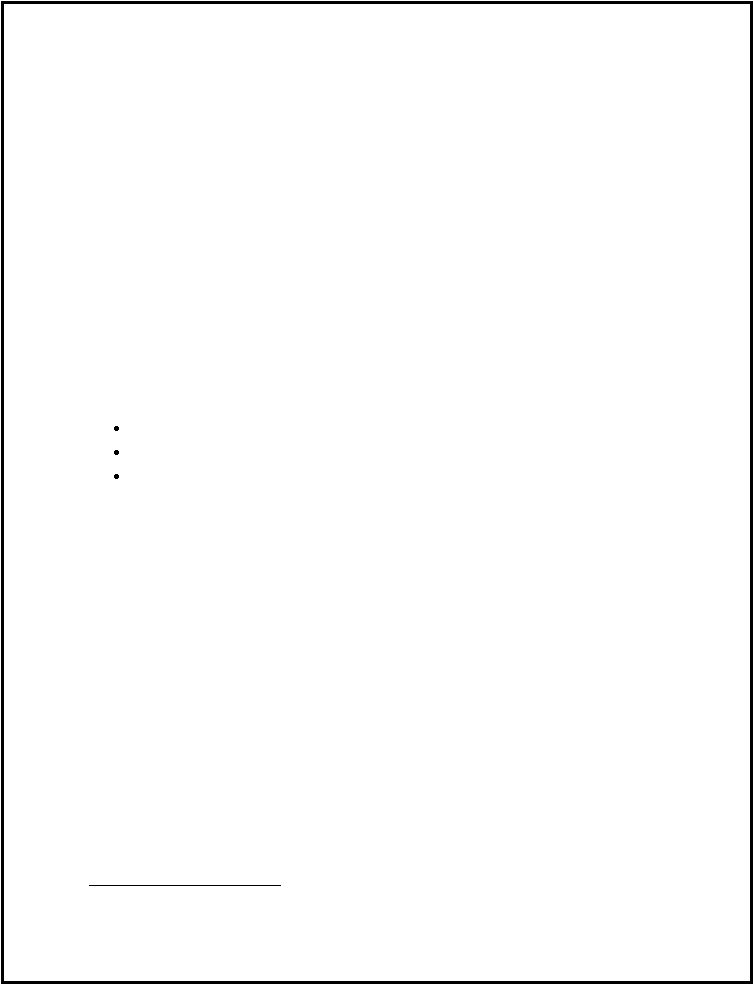
SAE J2735-Draft-Rev29 [issued: 12-11-08]
-
273 -
This is an SAE Motor Vehicle Council draft document of the DSRC committee, subject to change.
= 10). This would allow the user managing the probe data generation, given knowledge of the distance and
direction to the next RSU, to evenly geographically space snapshots.
Probe Message Management: Interval between Probe Message Broadcasts
This parameter will control when the snapshots are transmitted back to the RSU as part of probe messages.
This will allow the management message to request that probe messages be sent to the RSU at an interval
other than the default (which is when a vehicle first enters range of an RSU). For example, this might
allow an adaptive control system to request periodic snapshots be generated every two seconds and probe
messages transmitted every four seconds (i.e., each probe message would contain only 2 periodic
snapshots) while in range of the RSU.
DCK Text: A longer duration example might be helpful here as well. For example, an RSU with a radius
range of 1000m along a road way (and therefore spanning 2000M of any vehicles path) would have an
individual OBU in view for about 400 seconds if the vehicle was traveling at ~10mph. This is about as
long as possible to achieve. What management example could we provide for this use case?
Probe Message Management: Termination
This parameter is required to ensure that the OBU snapshot generation settings revert back from managed
settings to the default settings. This parameter will contain data such that when the first of the follow
16
occurs, probe snapshot generation returns to the default settings:
A time-based duration expires
A distance-based duration expires (i.e., a vehicle travels a certain distance)
A vehicle is out-of-range of the current RSU for a threshold time (default 5 seconds) – i.e. after 5
seconds of no RSU signal is received then management process is terminated
These values can be set independently, for example if time and out of range are not set then distance only
applies. For example if distance were set at 1km for westbound vehicles then is no new RSUs were
encountered and no events or stops and starts occurred the OBU would collect one snapshot per kilometer
for the next 30 km.
Probe Message Management: Vehicle Status Element Triggers
This parameter is used to adjust event triggered snapshot generation by adjusting the threshold of or
transitions in various vehicle status elements which can be used as triggers.
For example, this parameter might include the vehicle status element for vertical acceleration, and a
reduced threshold value. Thus, this would generate more snapshots that could be used as a roughness
measurement. Another example would be to reduce the threshold of vertical g forces on each wheel to zero
to calibrate road slope as a function of speed to determine adverse cambers.
Probe Message Management: Vehicle Sampling
The probe management message is a broadcast message. Therefore, all vehicles within range of an RSU
receive this message and respond to it. However, it is possible to control the percentage sample of vehicles
which will respond to any message by including in the probe management message a vehicle sampling
parameter. This parameter has two digits (range 0 to 255), which represent the range of the last digit of the
OBUs MAC address for those vehicles to which the management message applies.
16
This text (...when the first of the follow ...) makes no sense to me, re-word?

